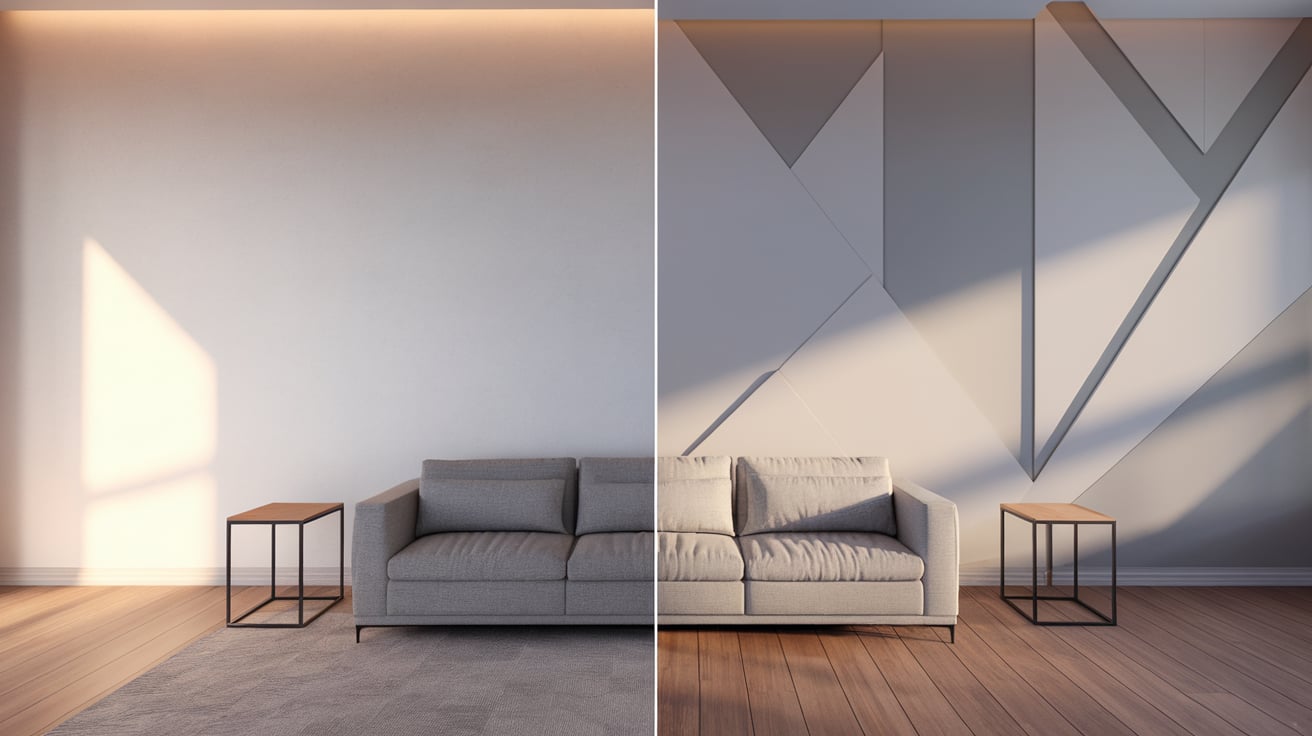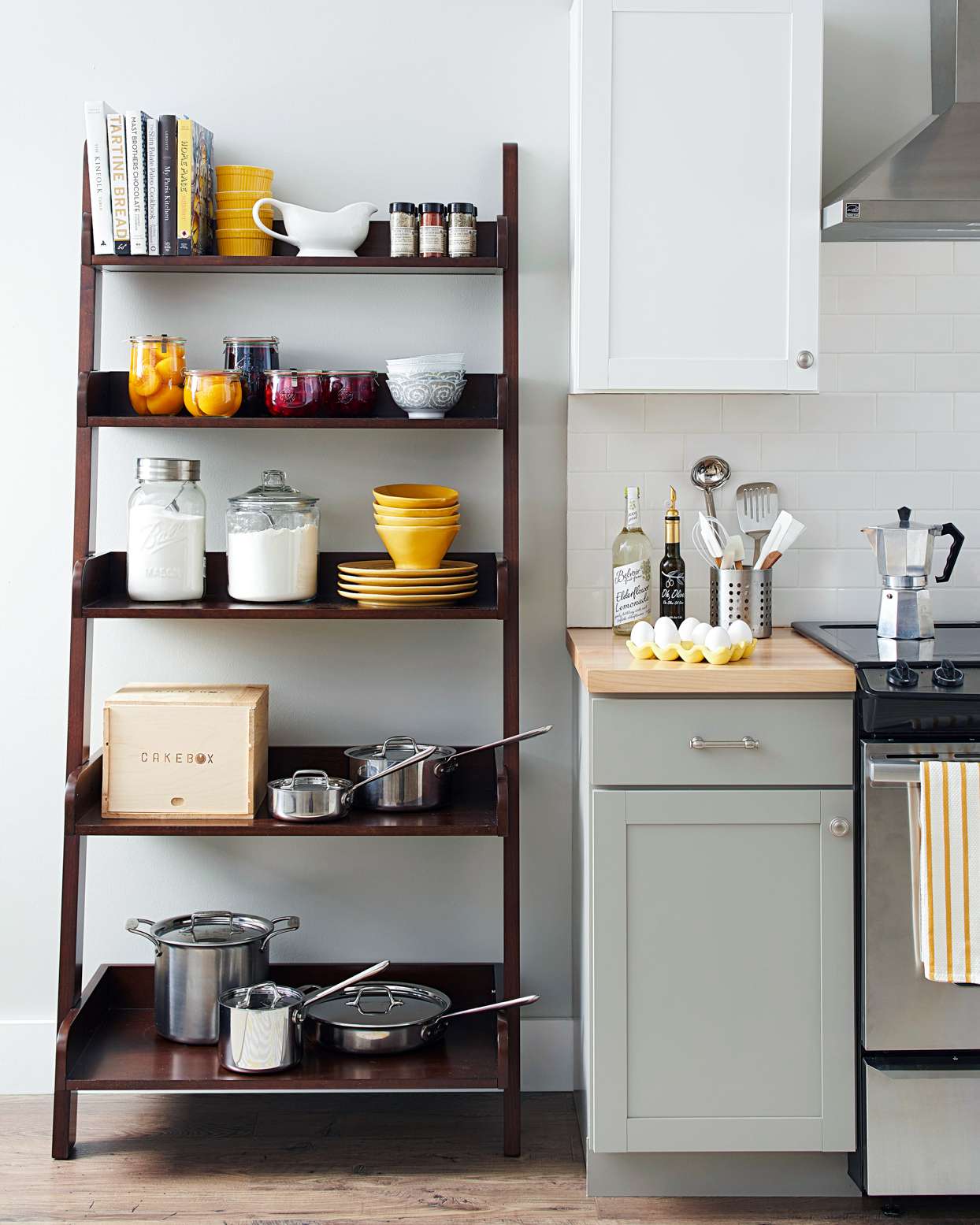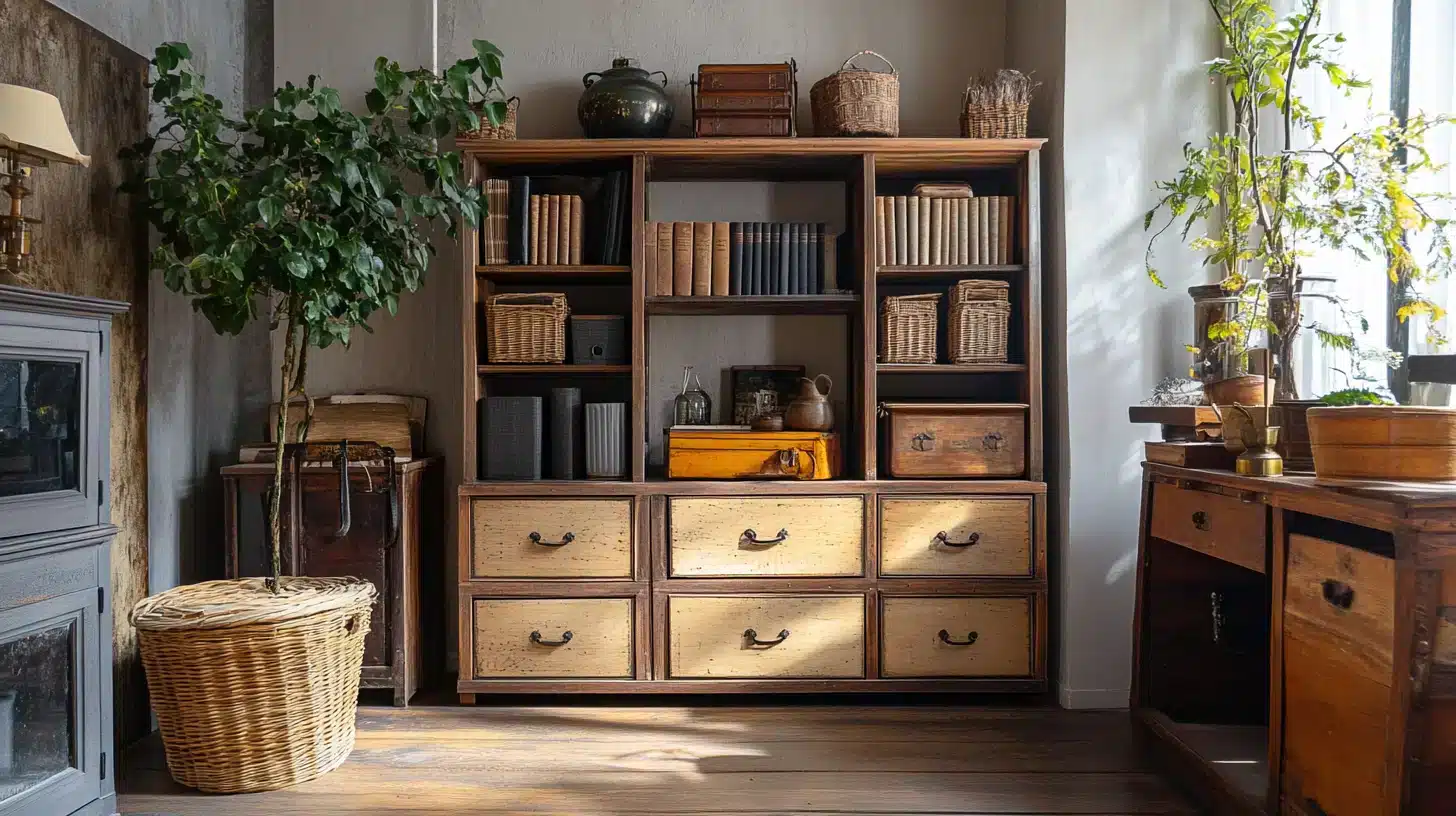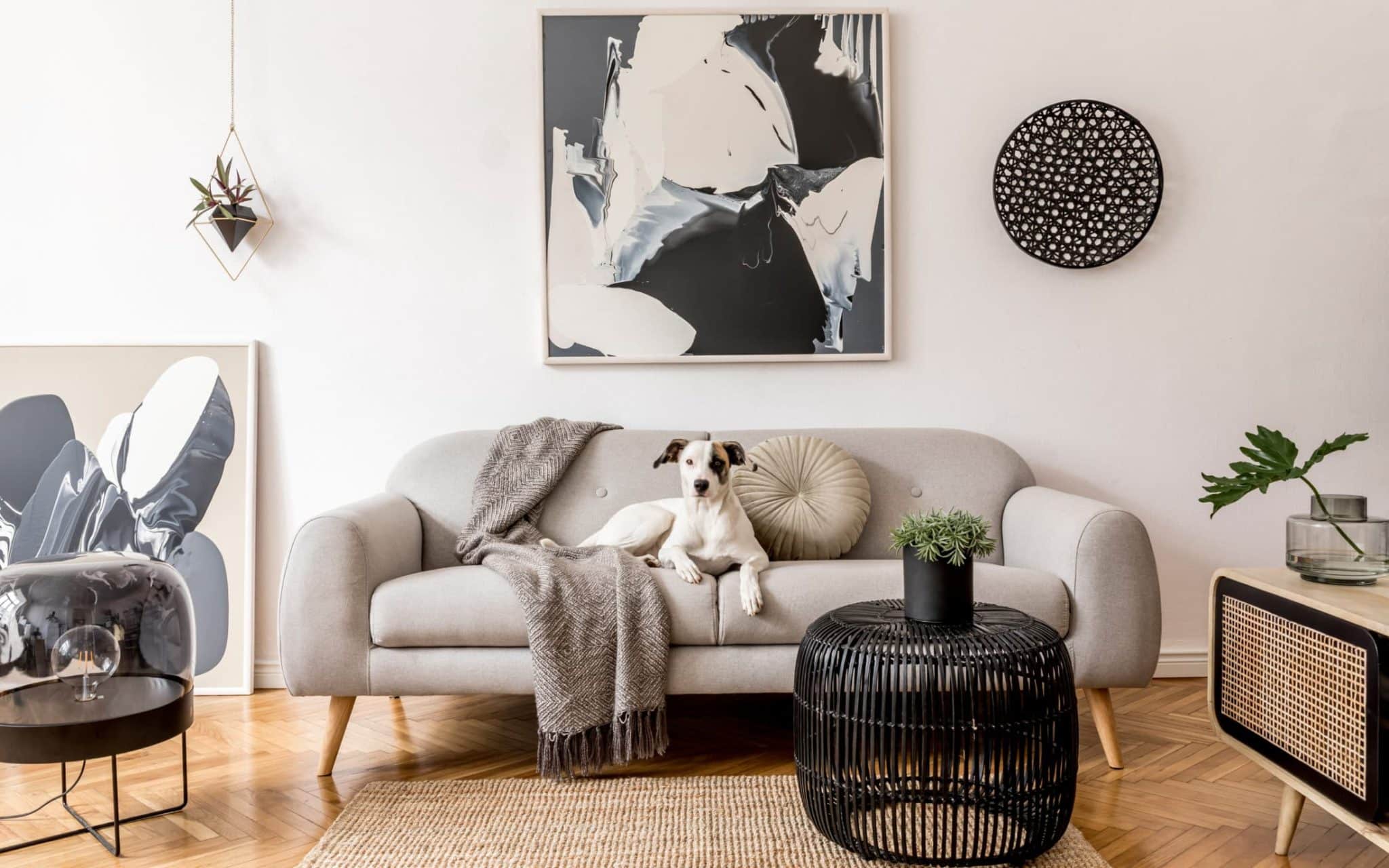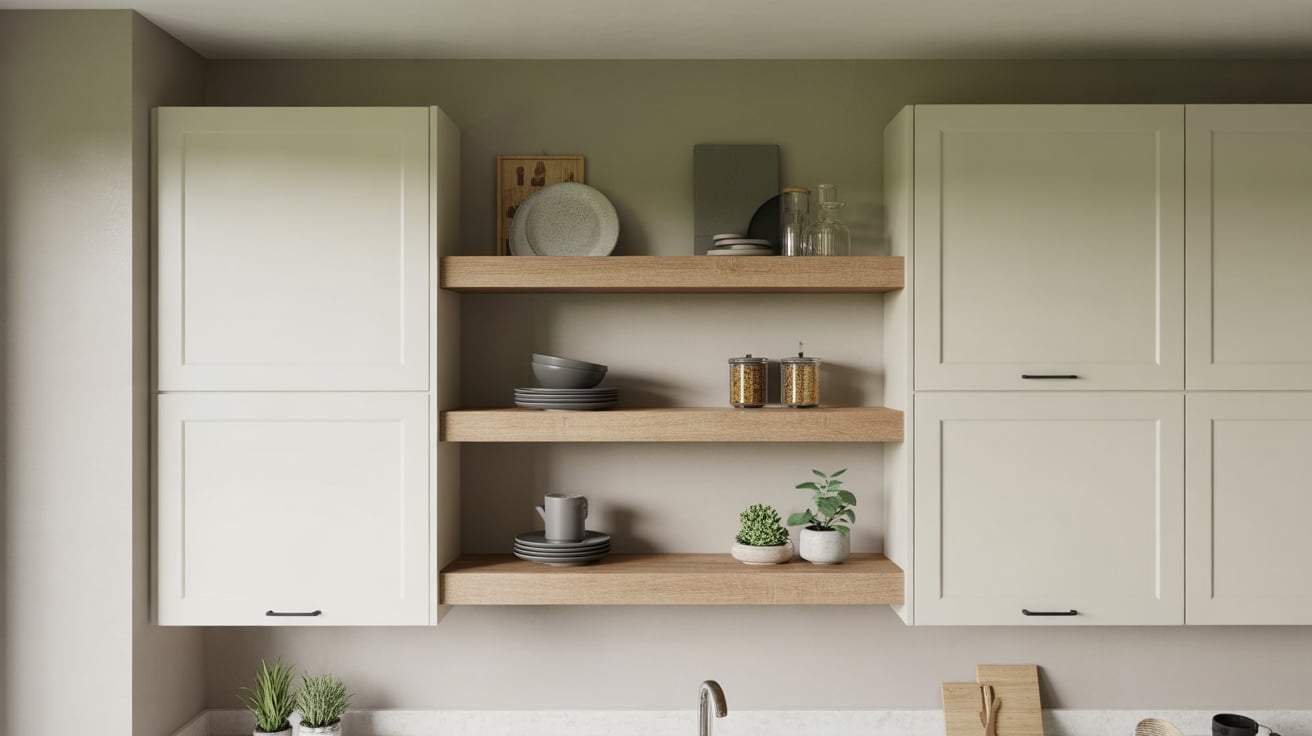Geometric Wall Designs: The Complete Guide to Transform Your Space
Are you looking to add style to a plain wall? Geometric wall designs turn simple spaces into stunning focal points. More homeowners now choose these patterns to bring life to their rooms without major costs.
A geometric wall design does more than catch the eye. It adds depth to rooms, makes spaces feel larger, and creates a unique touch in your home. From painted patterns to wood designs, you can match any style or budget.
This guide teaches you everything about creating your geometric wall. We’ll cover design choices, step-by-step methods, and expert tips to help you succeed.
Whether you’re new to DIY or an experienced decorator, you’re ready to start.
Understanding Geometric Wall Designs
1. What Are Geometric Wall Designs?
Geometric patterns bring math and art together on your walls. These designs use shapes like squares, triangles, and hexagons to create eye-catching patterns that can suit any style.
Geometric patterns date back to ancient times when civilizations used them in buildings and art. These patterns have found new life in modern homes, where simple lines and shapes create bold statements.
Modern geometric designs range from basic repeated patterns to complex arrangements. Some people choose classic hexagon grids, while others mix various shapes for a one-of-a-kind look.
2. Benefits of Geometric Accent Walls
A geometric accent wall can change how a room feels without major construction. It creates a strong focal point that draws attention and starts conversations.
These designs can make small rooms feel bigger by creating depth through patterns. The right pattern can direct eyes upward, making ceilings appear higher or outward and making walls seem wider.
Each geometric design tells a story about the homeowner’s style. You can pick colors and patterns that match your personality and existing decor.
3. Trending Geometric Designs This Year
Simple patterns with clean lines are gaining attention this year. Many homeowners choose two-tone designs that use light and dark shades of the same color.
Large-scale patterns have replaced smaller, busier designs. Walls featuring oversized triangles or diamonds make strong statements without feeling too busy.
Mixing straight lines with curves has also gained popularity. This combination creates movement and interest while keeping the design balanced.
Choosing the Right Method for Your Space
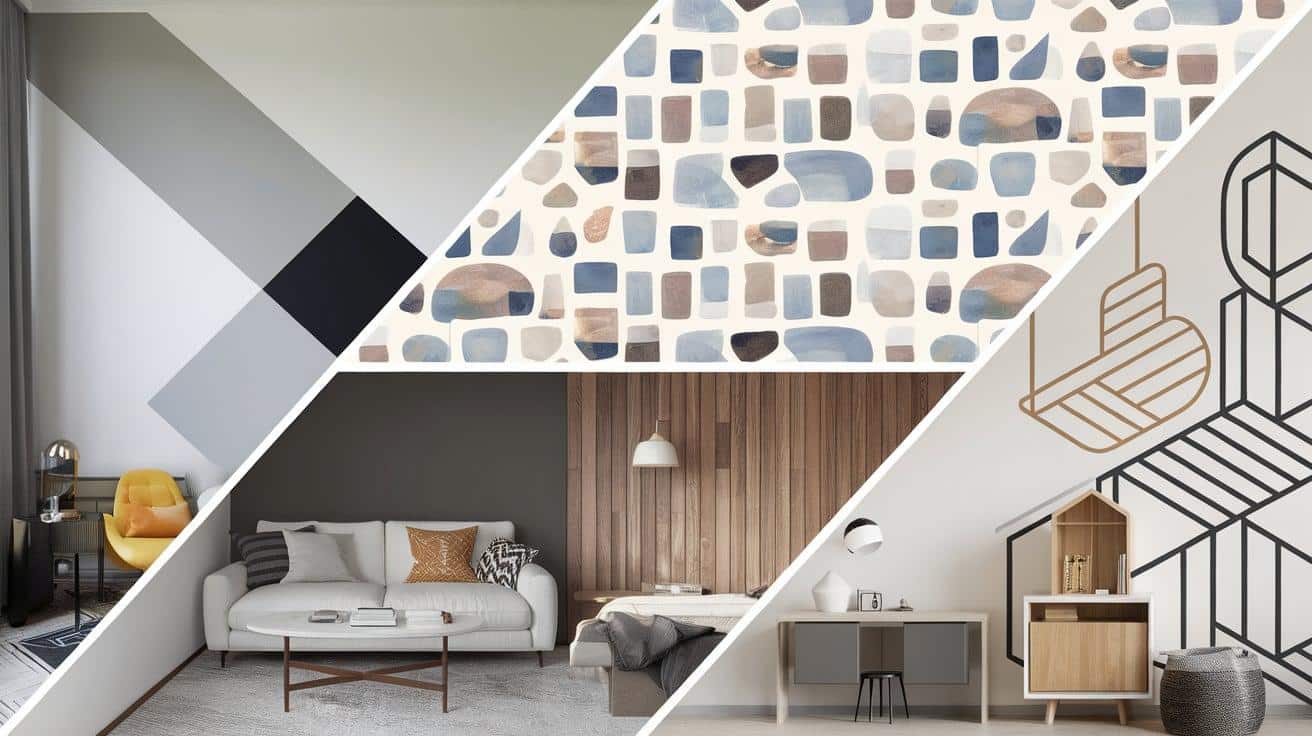
Comparison of Methods
Painting geometric designs requires basic tools and offers complete control over colors. You’ll need steady hands and patience, but this method costs less than most alternatives.
Wallpaper comes in two main types: peel-and-stick and pre-pasted options. Peel-and-stick wallpaper works well for renters because it can be removed easily without damaging the wall.
Decals and murals offer quick solutions for those wanting instant results. These stick-on options work best in small areas or when you want to test a design idea.
Wood accent walls add texture and depth through raised patterns. This method costs more and requires tools, but its three-dimensional design creates a lasting impact.
Factors to Consider
Your skill level matters when picking a method for your geometric wall. Beginners might start with decals or peel-and-stick wallpaper, while experienced DIYers can tackle wood installations.
Budget planning helps narrow down your options:
- Paint projects: $50-200
- Wallpaper: $100-500
- Decals: $30-150
- Wood accent walls: $200-800
Time commitments vary by method. Paint projects take 2-3 days, while wallpaper installation takes 1-2 days. Decals take hours, but wood walls might need a full weekend.
Renters should focus on temporary options like decals or removable wallpaper. Homeowners can choose any method based on their long-term vision.
Different rooms need different approaches. Bathrooms need moisture-resistant materials, while bedrooms allow more light options.
DIY Geometric Wall Tutorial
Materials and Tools Needed
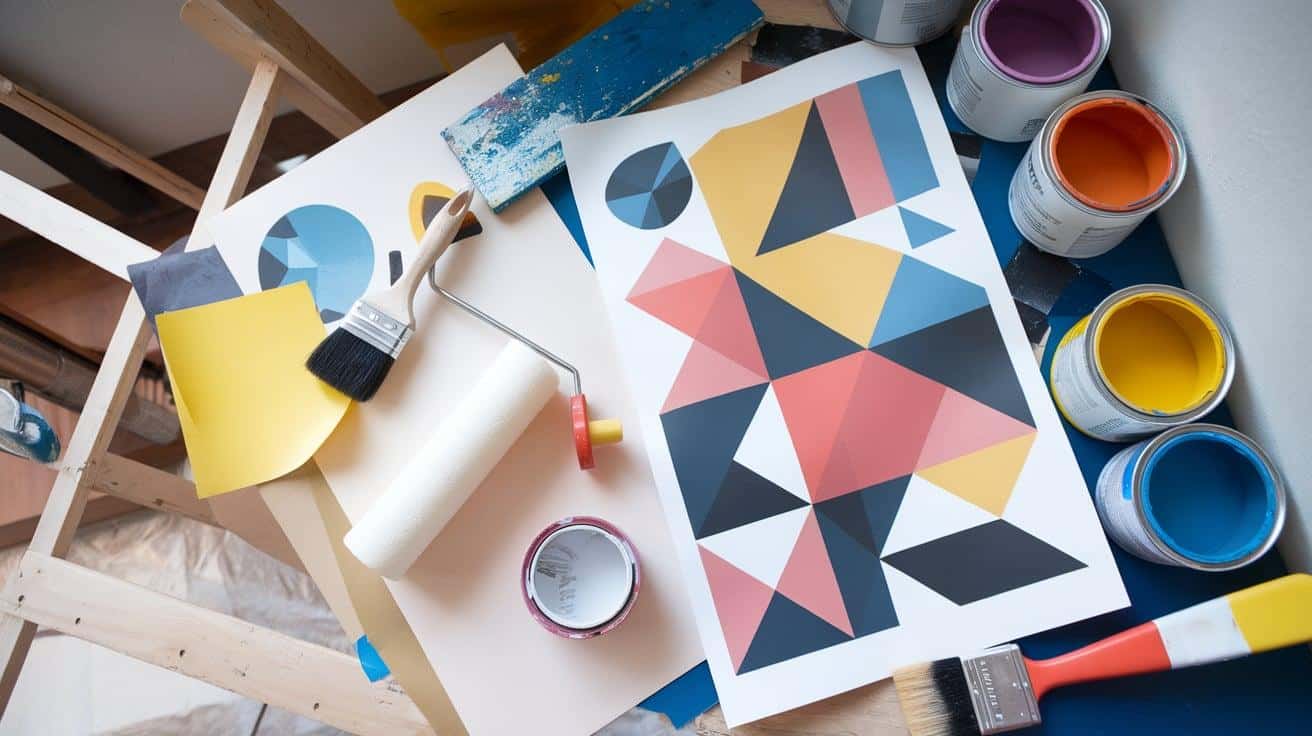
For your geometric wall project, start with quality paint brushes and rollers. Basic supplies include painter’s tape, a level, measuring tape, and pencils for marking.
Paint selection can greatly affect your final results. Choose paint with good coverage, and get sample sizes first to test your color choices.
Step-by-Step Guide
STEP 1: Preparation
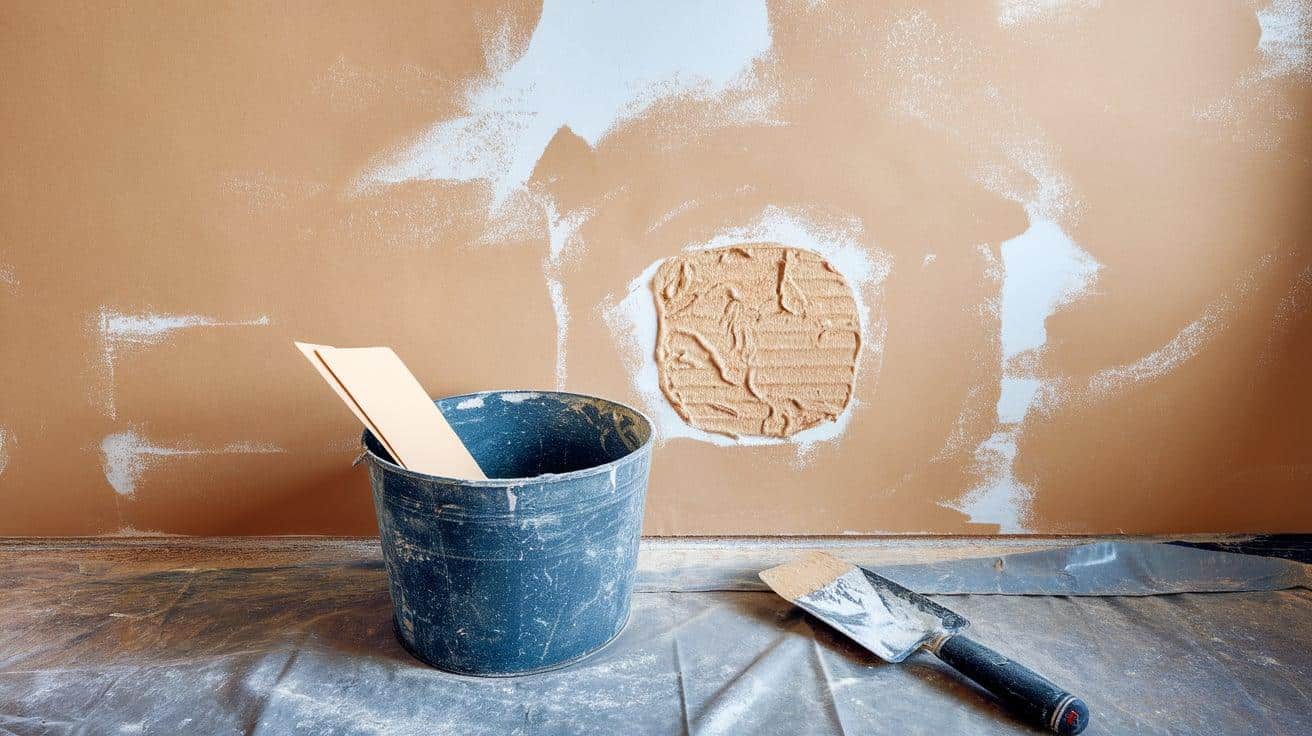
Start with a clean wall by wiping it with mild soap and water. Fill any holes or cracks with spackling compound and sand the patches smooth.
Let the wall dry completely before applying primer. A good primer helps paint stick better and ensures even color coverage.
STEP 2: Design Planning

Draw your pattern on paper first to work out the spacing and angles. Grid paper helps keep your measurements accurate and proportional.
Take photos of your room and use basic editing apps to test different patterns. This will help you avoid costly mistakes and confirm your design choices.
STEP 3: Creating the Pattern
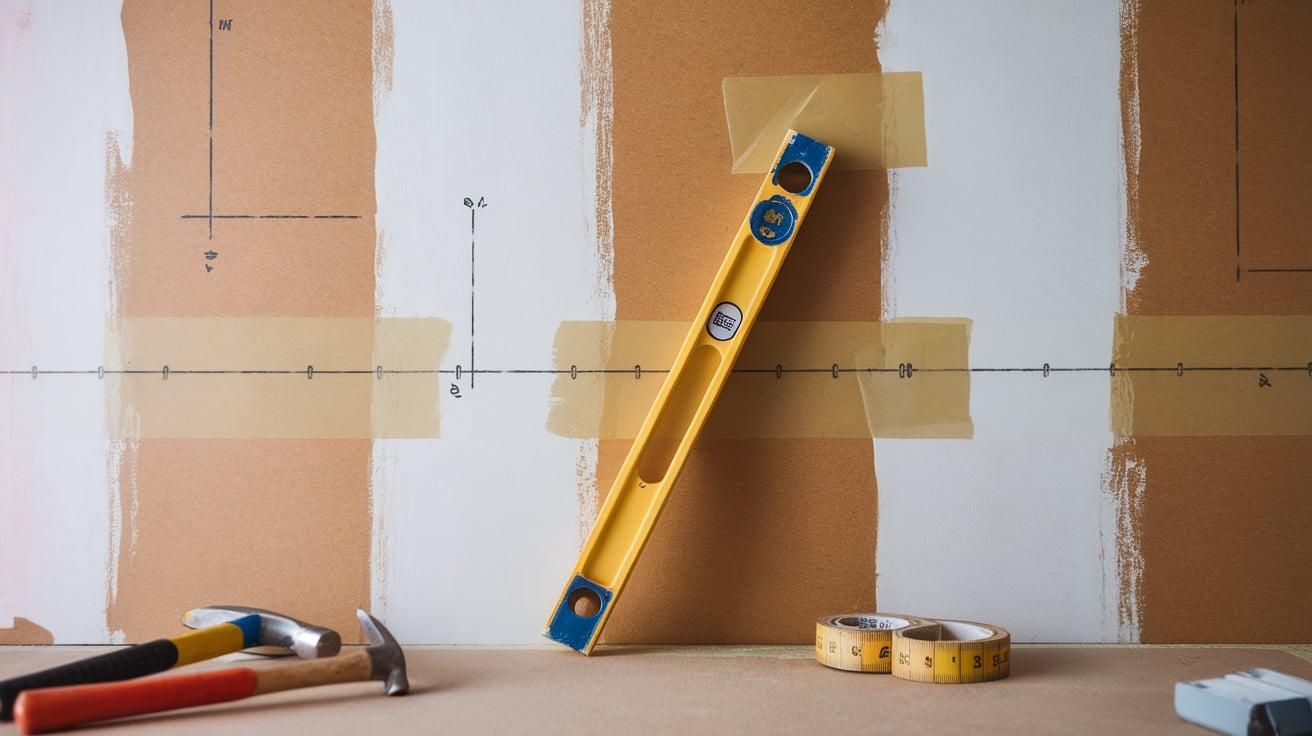
Begin marking your wall with light pencil lines using a level as your guide. Work from the center outward to keep the pattern balanced.
Apply painter’s tape following your pencil marks, pressing firmly on the edges. Before proceeding, double-check all angles with your level.
STEP 4: Painting Techniques
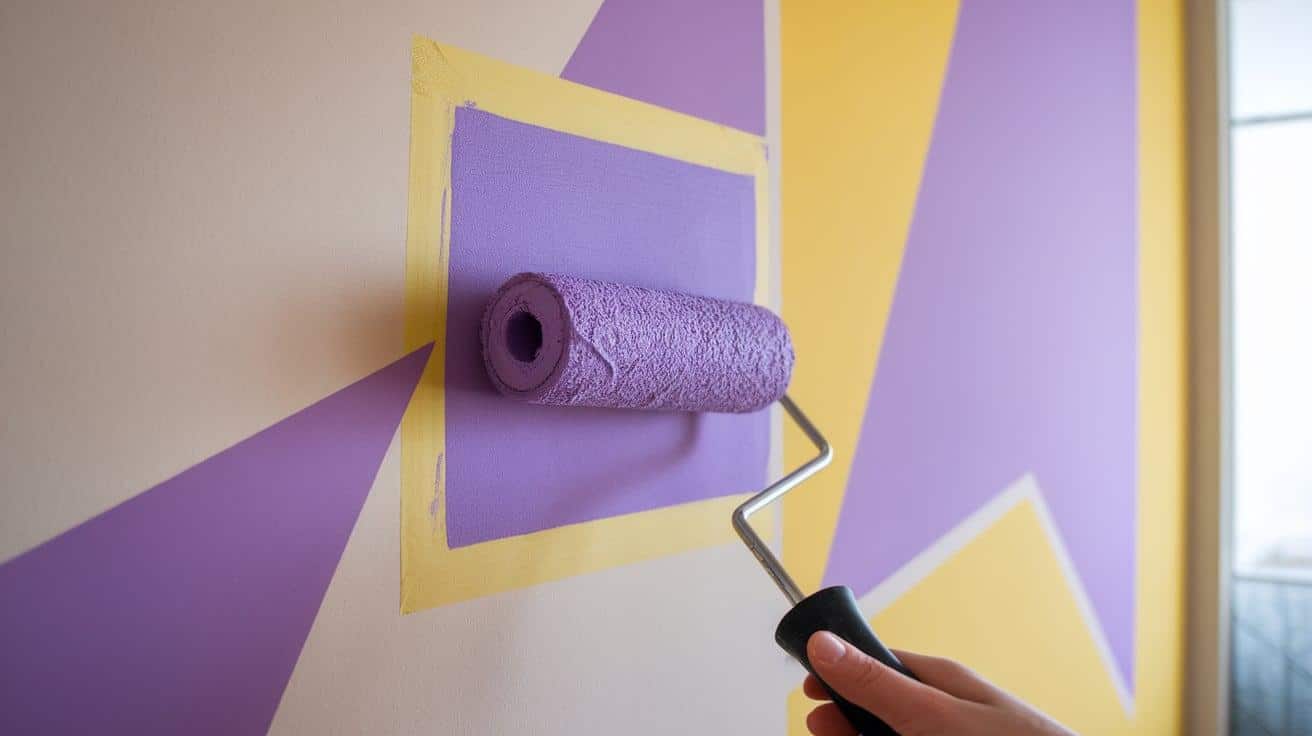
Paint away from the tape edges to prevent bleeding underneath. Use light coats of paint rather than one thick layer.
Wait until the paint is almost dry before applying a second coat. This creates cleaner lines and more even coverage.
STEP 5: Finishing Up
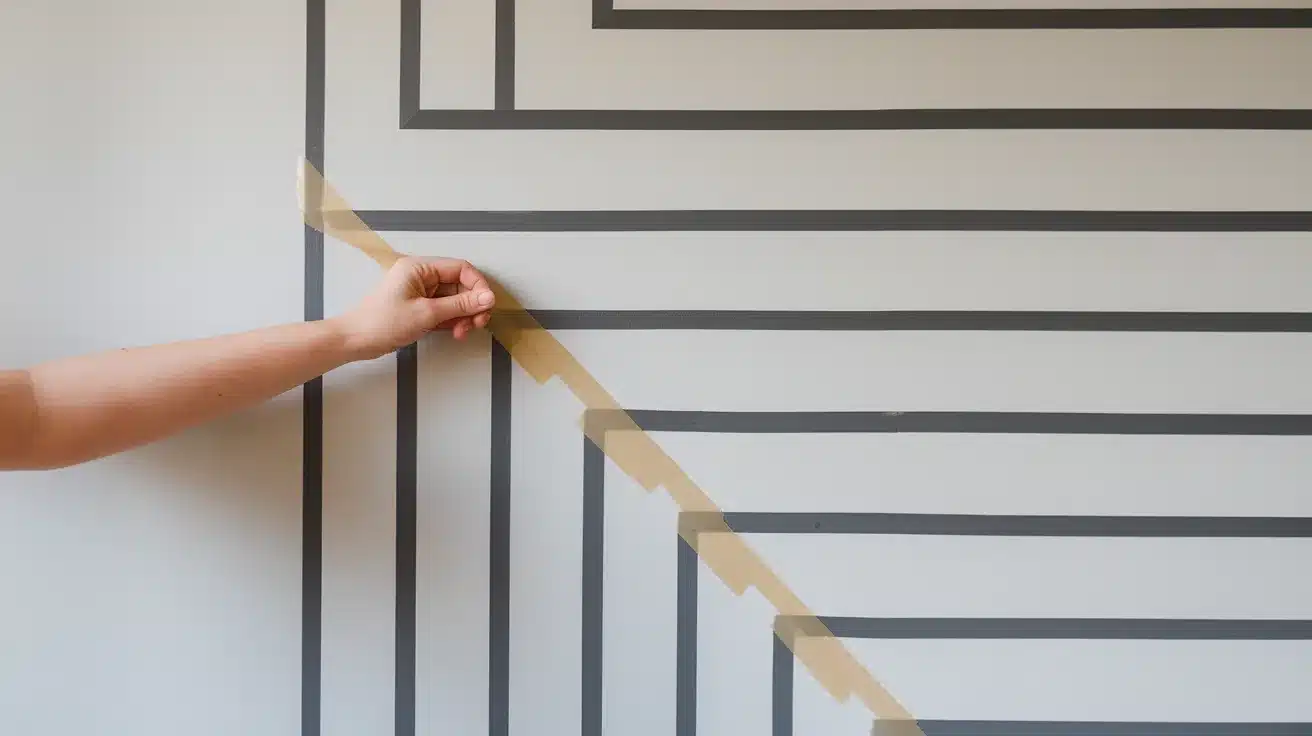
Remove the tape while the paint is still slightly damp. For the cleanest lines, pull the tape at a 45-degree angle.
After the paint dries completely, check for any spots that need touch-ups. Small artist brushes work well for fixing minor imperfections.
Troubleshooting Common Issues
Paint bleeding happens when the tape isn’t sealed properly. To prevent this problem, press down all tape edges with a putty knife before painting.
Uneven lines often result from tape stretching during application. To maintain better control, cut long pieces of tape into smaller sections.
Color differences between sections usually mean the paint wasn’t mixed well. Stir paint thoroughly and use the same number of coats everywhere.
A List of 5 Geometric Wall Design Inspirations
1. Two-Tone Diagonal Stripes
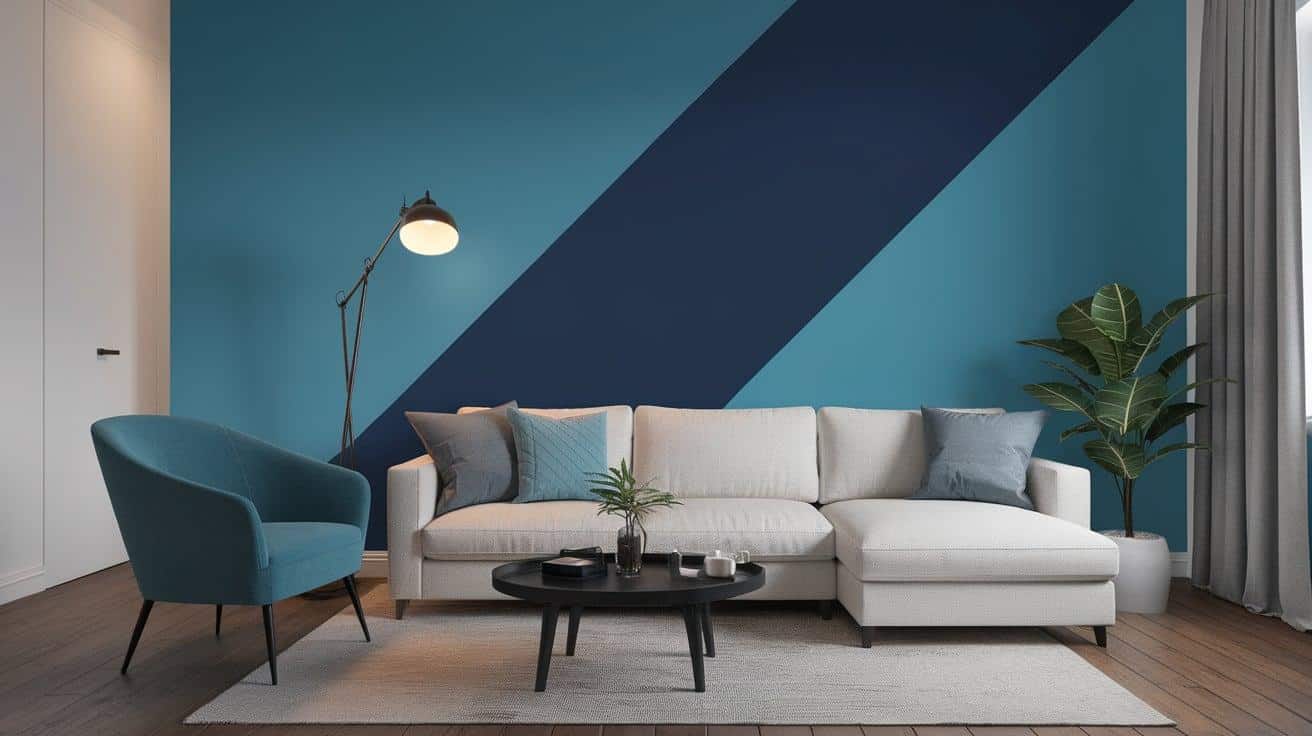
Create a modern look with bold diagonal stripes in two complementary shades. This design adds energy to any space, making it perfect for living rooms or offices seeking a vibrant and clean look.
2. Oversized Hexagon Patterns
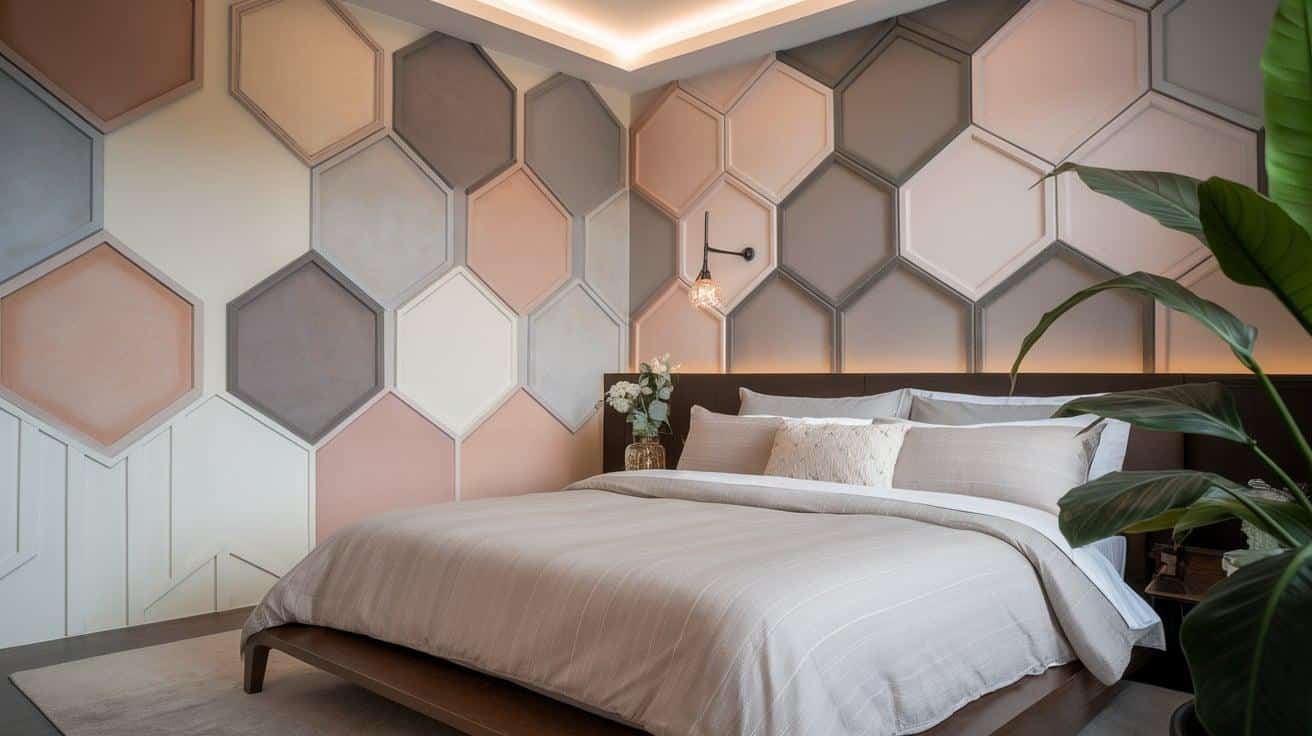
Oversized hexagons bring dignity and a contemporary vibe to accent walls. Neutral or pastel tones work beautifully in bedrooms or dining spaces, adding a touch of sophistication without overwhelming the room.
3. 3D Cube Illusion
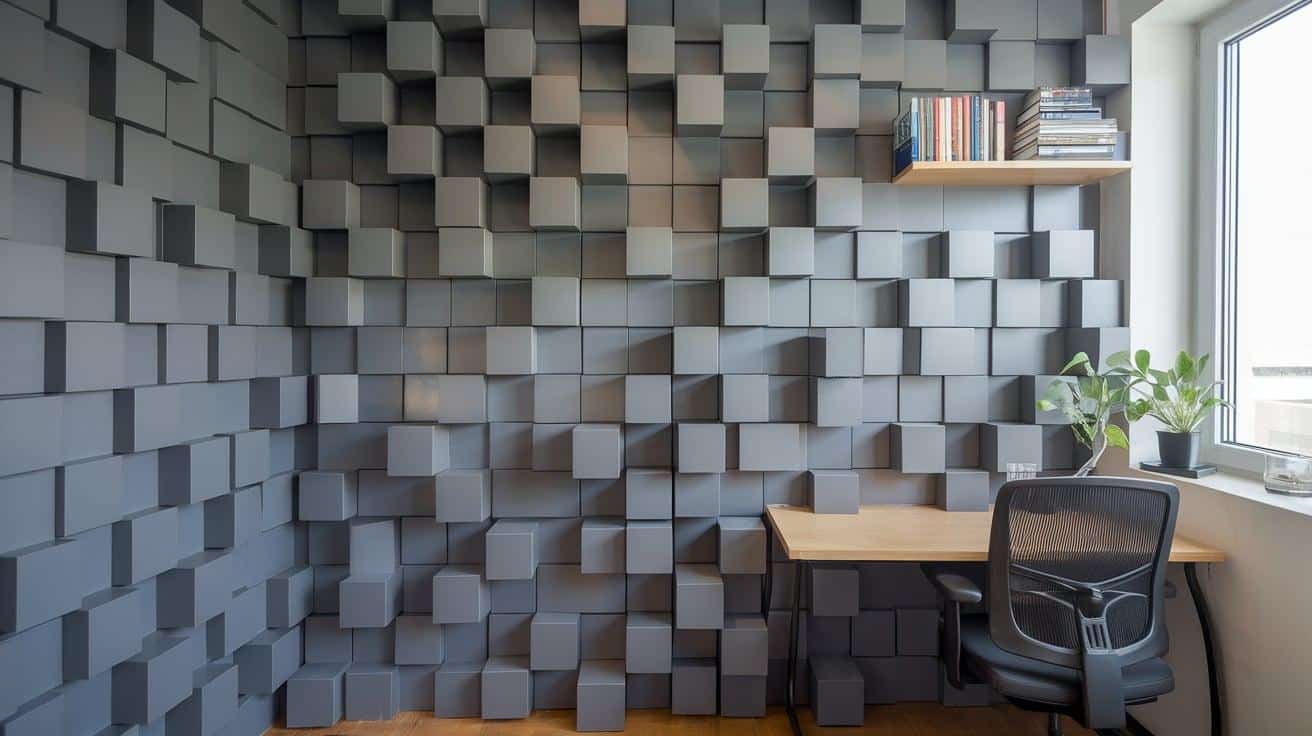
The 3D cube illusion uses light, medium, and dark shades of the same color to create depth. Ideal for small spaces like home offices, this design adds a unique and eye-catching dimension to walls.
4. Asymmetrical Triangles
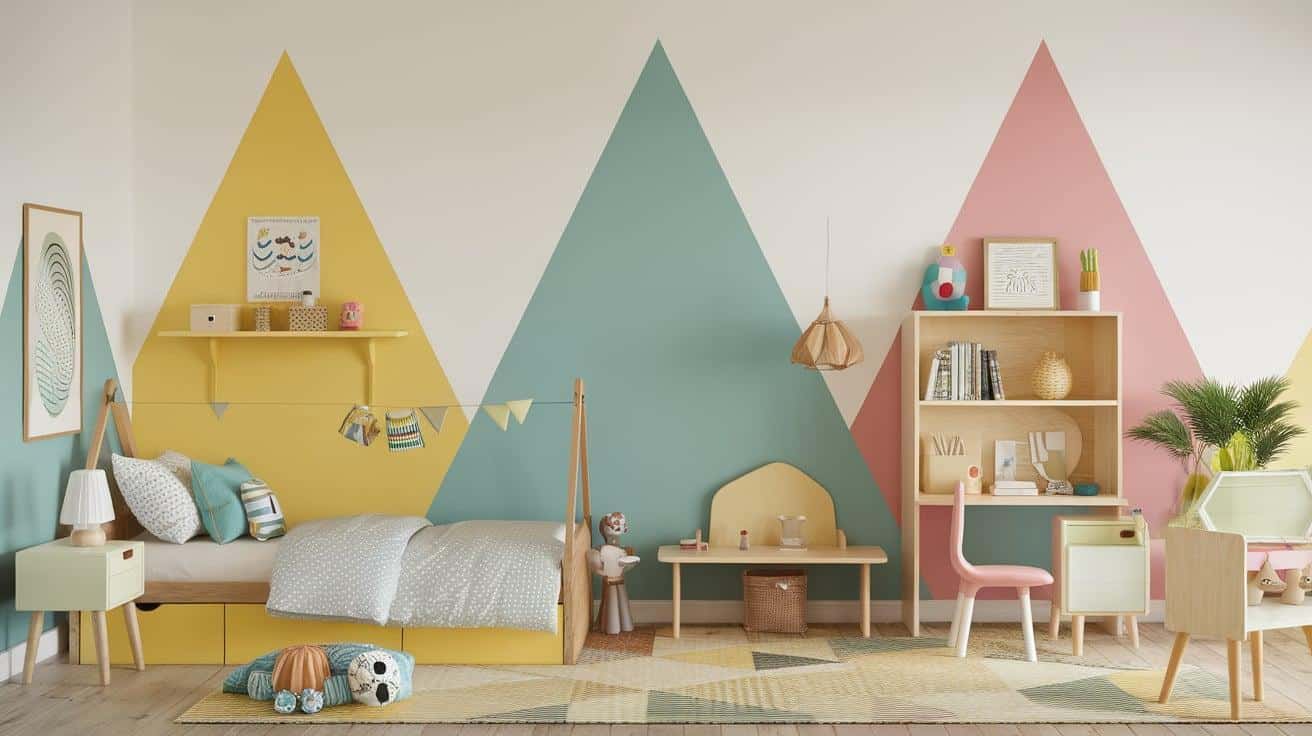
Playful, bold, asymmetrical triangles in vibrant colors bring life to any room. This design works especially well in kids’ rooms or creative spaces, offering a modern and fun aesthetic.
5. Circular Geometry Mix
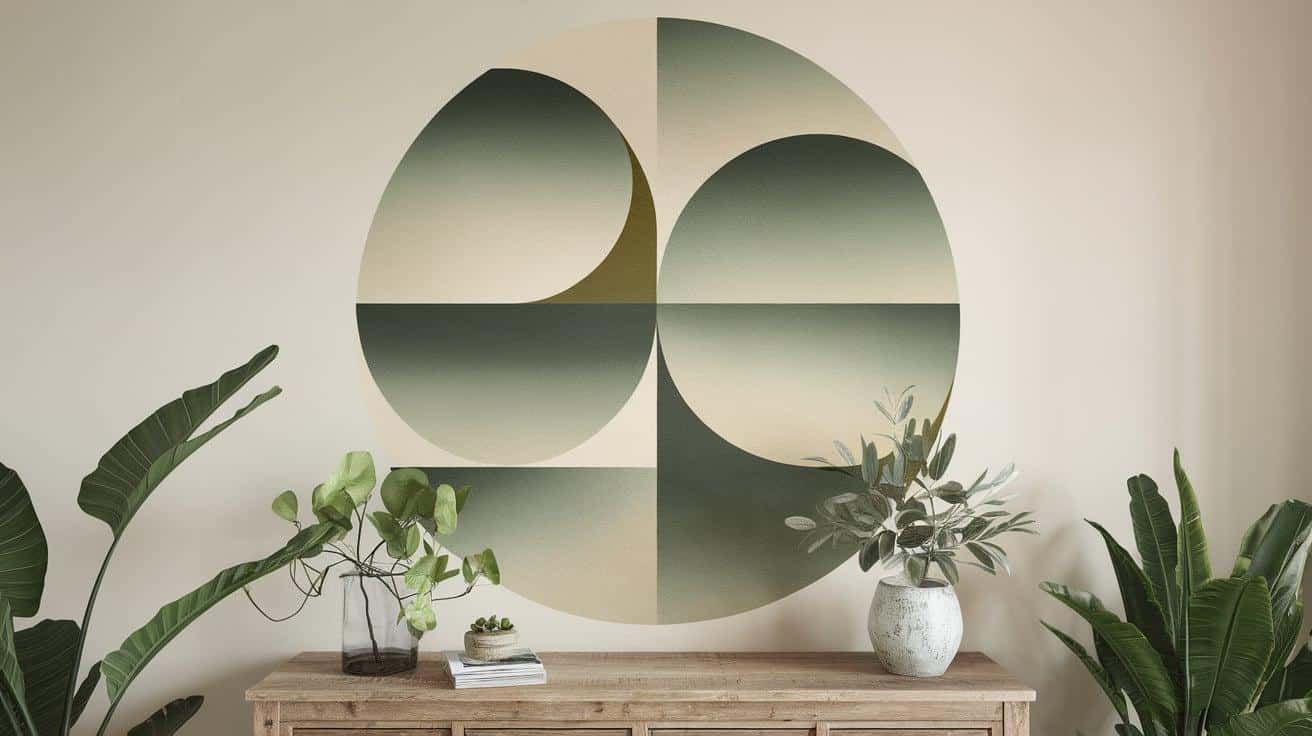
Concentric circles and overlapping shapes in soft gradients create a relaxing yet visually engaging design. This pattern is perfect for entryways or areas where you want a welcoming atmosphere.
Removal and Maintenance
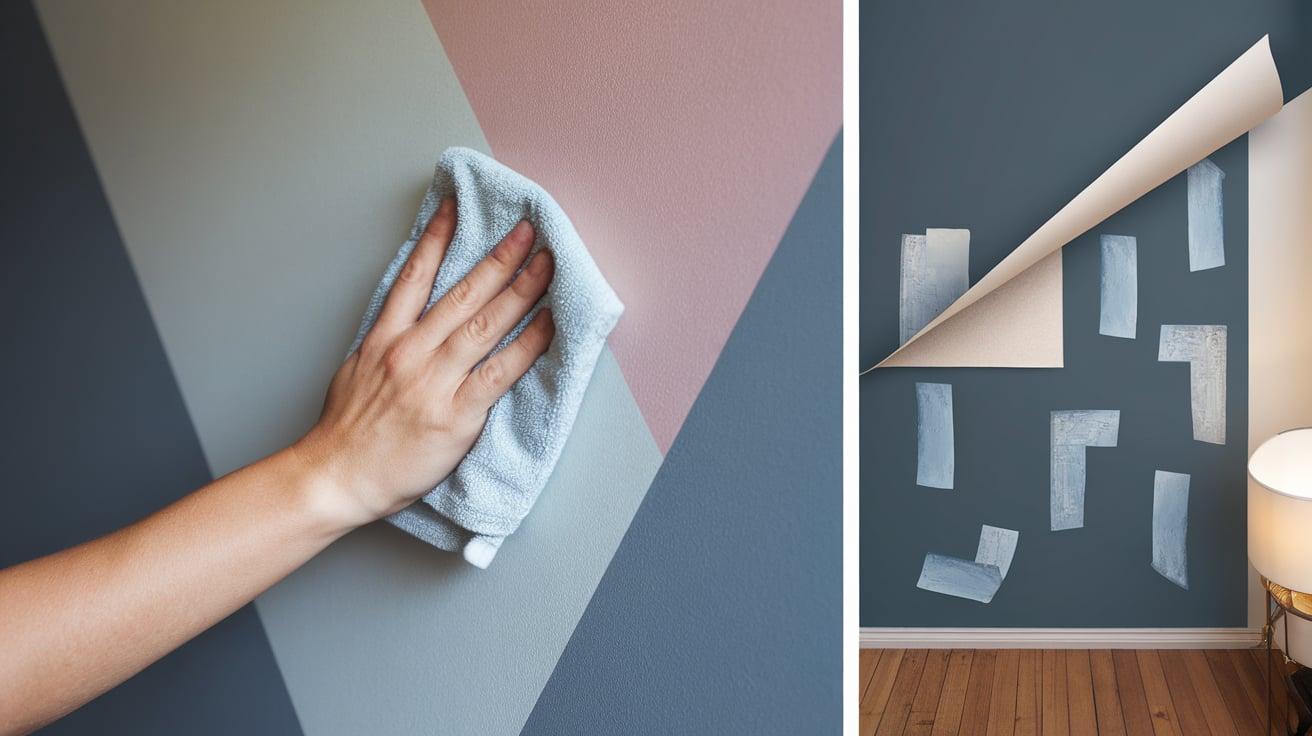
Paint-based geometric designs need regular cleaning to stay fresh. Use a soft cloth with mild soap and water to remove dust and marks.
Wall cleaning methods vary based on your paint finish:
- Flat paint needs gentle spot cleaning
- Eggshell allows light scrubbing
- Semi-gloss stands up to regular washing
Wallpaper removal requires different steps based on the type used. Peel-and-stick versions typically come off cleanly when pulled at an angle.
Traditional wallpaper might need a removal solution to loosen the adhesive. Test any removal product in a small, hidden area first.
For wood accent walls, dust regularly with a microfiber cloth. Check for loose pieces every few months and secure them promptly.
Budgeting and Project Planning
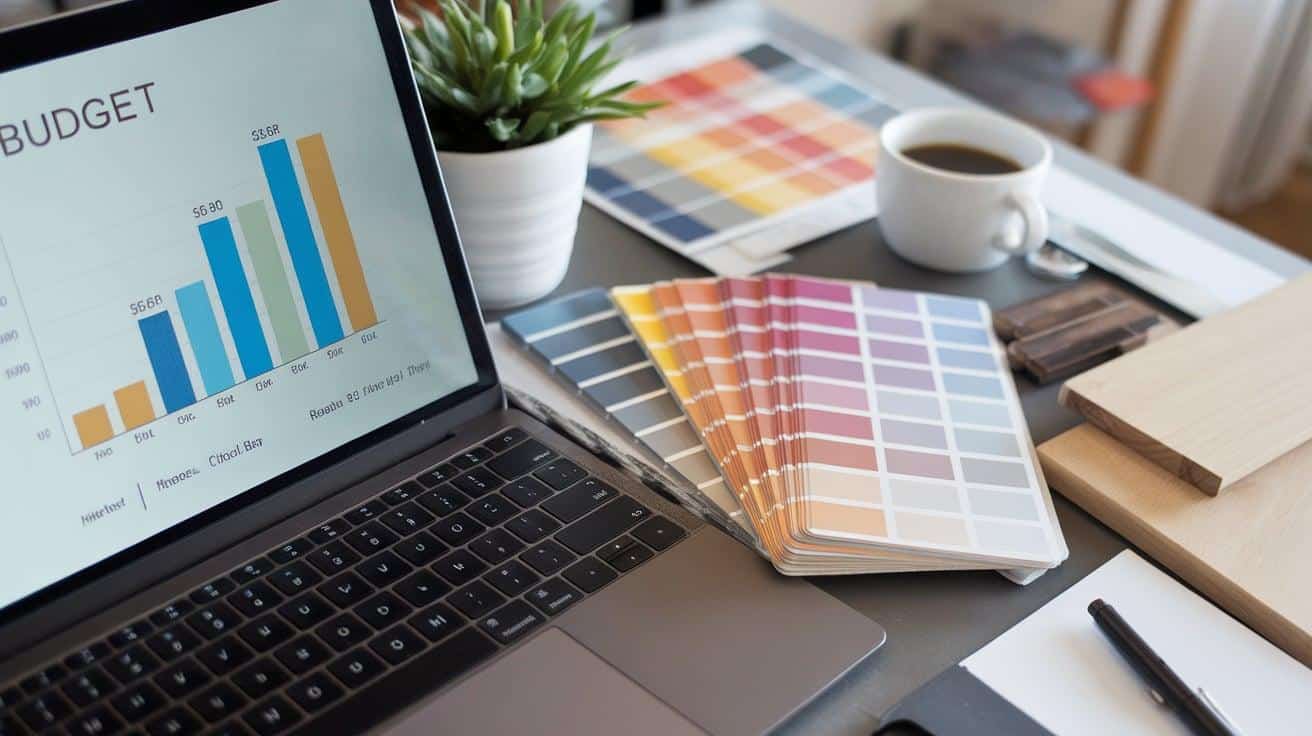
1. Cost Estimates
| CATEGORY | ITEM | COST ESTIMATE |
|---|---|---|
| PAINT PROJECTS | 1. Paint (per gallon) | $30–$60 |
| 2. Tape (per roll) | $5–$10 | |
| 3. Brushes and rollers | $20–$40 | |
| 4. Basic tools | $30–$50 | |
| WALLPAPER PROJECTS | 1. Standard wallpaper (per sq. ft.) | $1–$3 |
| 2. Designer patterns (per sq. ft.) | $5–$10 | |
| 3. Installation tools | $25–$50 |
2. Time Management
Most geometric wall projects follow this timeline:
- Planning and prep: 2-4 hours
- Wall preparation: 2-3 hours
- Pattern layout: 2-4 hours
- Painting or installation: 4-8 hours
- Finishing touches: 1-2 hours
Breaking the project into smaller tasks helps prevent mistakes. Plan your work during daylight hours for better visibility.
3. Planning Tools
Keep track of your progress with a simple checklist. Write down each step and mark items complete as you finish them.
Many phone apps help with pattern design and color selection. Some popular options offer free versions for basic planning.
Eco-Friendly and Sustainable Options
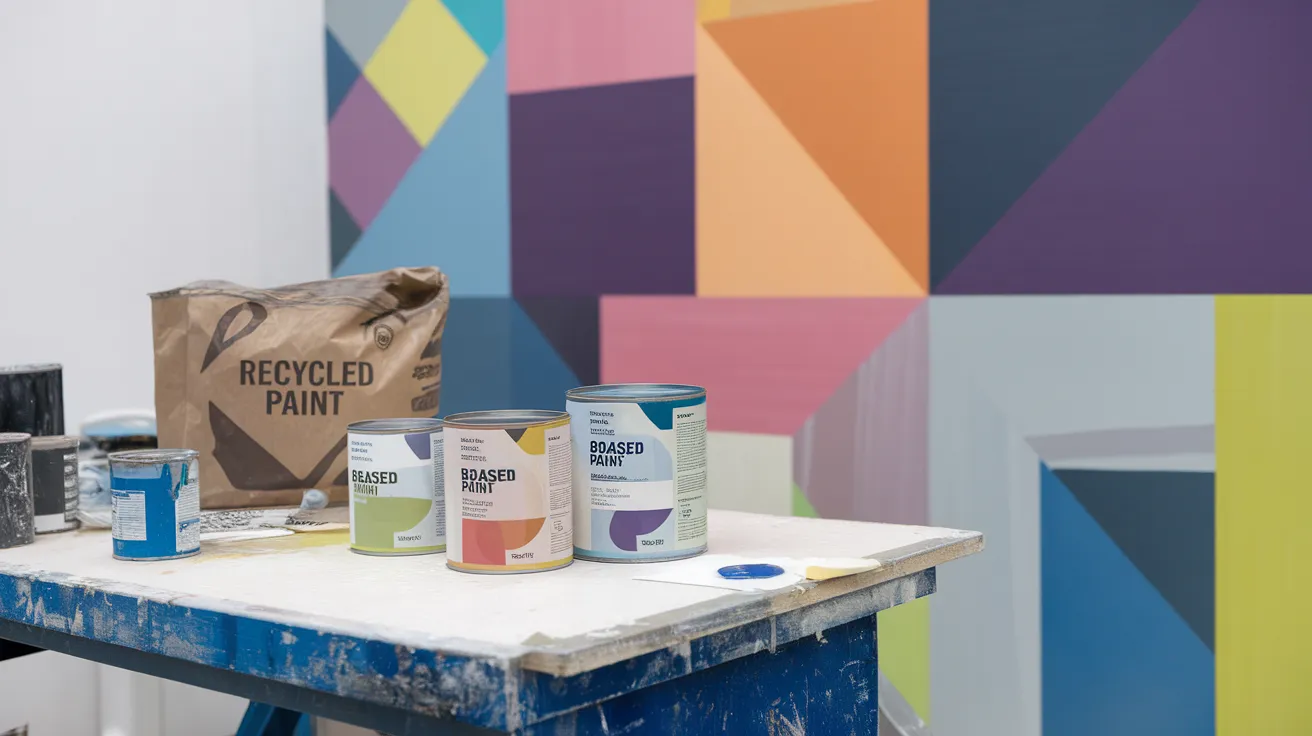
Sustainable Materials
Water-based paints offer better environmental choices. These paints release fewer harmful compounds into the air.
Look for paint brands with recycled packaging. Some companies now use containers made from post-consumer materials.
Low VOC Products
Low VOC paints help protect indoor air quality. These products reduce headaches and breathing issues during application.
Natural paint options have improved greatly. Modern clay and milk-based paints offer good coverage with minimal environmental impact.
Final Thoughts
Creating a geometric wall design is a perfect way to refresh your living space. Options range from simple painted patterns to detailed wood installations, so you can find a method that matches your skills and budget.
Remember to plan your design carefully, gather quality materials, and take time with each step. The success of your project depends more on patience than perfect skills.
Ready to start your geometric wall project? To build confidence, begin with a simple design in a small room. Take photos of your progress, and don’t worry if you need to make adjustments along the way.
We’d love to see your geometric wall creations! Share your photos and stories in the comments below. Your experience might inspire others to try their designs.
Frequently Asked Questions (FAQs)
What Wood Should I Use for a Geometric Accent Wall?
For geometric accent walls, use lightweight wood like plywood or MDF. These are easy to cut, affordable, and can be painted or stained to match your decor.
How Can I Create a Geometric Wall Design Without Painting?
Create geometric patterns using wood panels, adhesive wallpaper, or removable decals. These options add style and are ideal for renters or temporary decorators.
Can Geometric Wall Designs Be Used in Small Spaces?
Yes, geometric wall designs can work in small spaces. Opt for subtle patterns and lighter colors to create depth and make the area feel more spacious.

